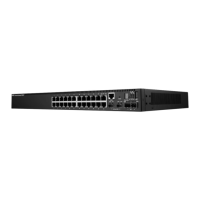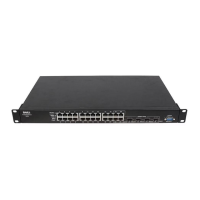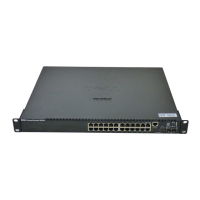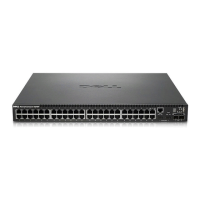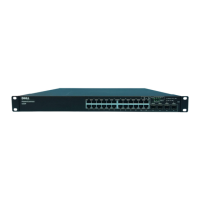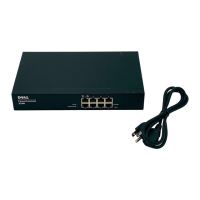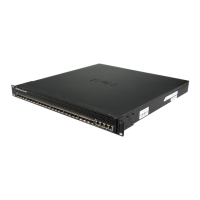18 Introduction
Spanning Tree Protocol Features
Spanning Tree Protocol (STP)
802.1d Spanning tree is a standard Layer 2 switch requirement that allows bridges to automatically
prevent and resolve L2 forwarding loops. Switches exchange configuration messages using specifically
formatted frames and selectively enable and disable forwarding on ports.
For more information, see "Configuring the Spanning Tree Protocol" on page 303.
Fast Link
STP can take up to 30-60 seconds to converge. During this time, STP detects possible loops, allowing
time for status changes to propagate and for relevant devices to respond. 30-60 seconds is considered too
long of a response time for many applications. The Fast Link option bypasses this delay, and can be used
in network topologies where forwarding loops do not occur.
For more information enabling Fast Link for ports and LAGs, see "Defining STP Port Settings" on
page 308 or "Defining STP LAG Settings" on page 312.
IEEE 802.1w Rapid Spanning Tree
Spanning Tree can take 30-60 seconds for each host to decide whether its ports are actively forwarding
traffic. Rapid Spanning Tree (RSTP) detects uses of network topologies to enable faster convergence,
without creating forwarding loops.
For more information, see "Configuring Rapid Spanning Tree" on page 314.
STP Root Guard
Root guard restricts the interface from functioning as the root port for the switch
Multiple Spanning Tree (MSTP)
MTSP operation maps VLAN into STP instances. Multiple spanning tree provides differing load
balancing scenario. Packet assigned to various VLANs are transmitted along different paths within
Multiple Spanning Tree Regions(MST Regions). Regions are one or more Multiple Spanning Tree
Bridges by which frames can be transmitted.
Link Aggregation
For more information, see "Aggregating Ports" on page 351.
Link Aggregation
Up to eight Aggregated Links may be defined, each with up to eight member ports, to form a single Link
Aggregated Group (LAG). This enables:
• Fault tolerance protection from physical link disruption
• Higher bandwidth connections

